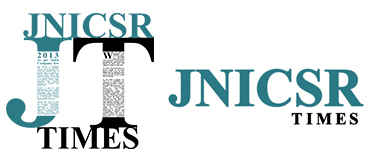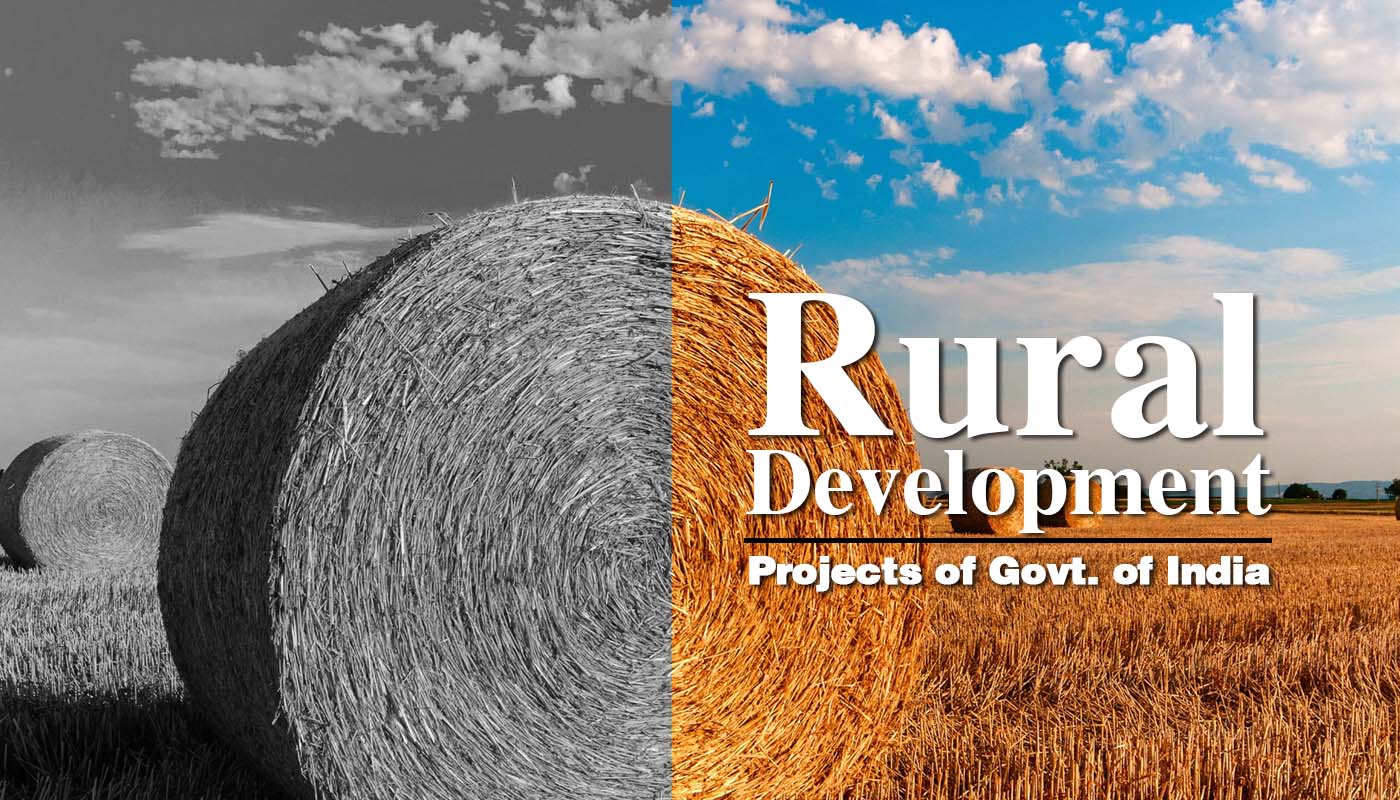Note: This article based on research study which was conducted by JNICSR Foundation at village of Maharashtra which was adopted by Member of Parliament (M.P.) of Hatkanangle constituency of Kolhapur District.
1) Introduction:
1.1 Background:
India is a developing nation who’s over 65% of the population lives in rural area and most of them are engaged in agriculture and agri – allied sector for their livelihood. All our great leaders, from Late Mahatma Gandhi to Late Dr. A. P. J. Kalam have advocated the need for transforming the villages as the key to the inclusive development of the nation. According to census report 2011 there are a total number of 24.39 Crore households in India, of which 17.91 Crore (68.9% population) live in villages. The number of population in Below Poverty Line (BPL) has been estimated in 2011-2012 as 25.7% rural areas, 13.7% in urban areas and 21.9% for the country as a whole. In the Maharashtra state near about 54.78% population lives in rural area ,among them 24.22% population is BPL and 17.35% as a whole state. Thus Mahatma Gandhi said that, “India lives in her villages; if the village perishes, India will perish too”. So the various wellness schemes of the Govt. bear testimony since independence till date for the rural development. One of them and the foremost, one may refer to as the “Saansad Adarsh Gram Yojana (SAGY) which is launched by the Hon. Prime Minister of India Mr. Narendra Modi on 11th Oct, 2014 which was the occasion of birth anniversary of late Jaya Prakash Narayan. (Journal, June 2016 ‘Kurukshetra’)
The idea of an “Adarsh Gram” or “Model Village” has been explored earlier as well most notably by the state Govt. of Maharashtra through the Adarsh Gaon Yojana (AGY) as a state level programme routed through the dept. of soil conservation and watershed development in the financial year 1996 – 1997 which is based on well known rural transformation model of “Ralegan Siddhi” under the leadership of Anna Hazare. The programme was undertaken in 300 villages across 300 blocks in Maharashtra. Ralegan Siddhi is a village of Parner tehsil in Ahmednagar district of Maharashtra which have, prior to intervention by Mr. Anna Hazare in 1975,had become quite notorious with all sorts of social evils, moral downfall and with badly shattered economic conditions. In general the village presented the profile of a poverty – stricken and debt ridden society. Scarcity of water was the key to distress, which limited the prospects of agriculture. It was Anna Hazare, who brought the villagers under his leadership and decided the way for village development to solve the problems related to basic necessities, which later on became the first ‘Ideal Village’ of Maharashtra. (Journal of Rural Development, vol.26 (No.2), p.p. 207 – 225 NIRD, Hyderabad)
Perhaps this model is the most notable which is envisaging people’s participation in natural resource management. The implementation of the programme was based on the following “Panchasutra” (The Five principles)
1. Donation of Labor (Shramdan)
2. Ban on Grazing (Charai Bandi)
3. Ban on Tree Cutting (Kurhad Bandi)
4. Ban on Liquor (Nasha Bandi)
5. Family Plannning ( Kutumb Niyojan)

The “Adarsh Gaon Yojana”(AGY) was implemented under the administrative structure consisting of four committees at various administrative levels such as the state, district, taluka and village levels.
The AGY was undertaken to provide safe drinking water, employment, green fodder, education and health so that the village may achieve self – sustenance. The village that is to be selected under this Yojana should be located in a drought prone area and should have shortage of drinking water as their major problem. The villagers were supposed to take an oath to follow the above five principles. The AGY aims at encouraging the villages to become self – sufficient and self – reliant by following the five principles and involving them in the watershed development programme with the assistance of NGO and government departments. The reputation of this integrated rural development approach has been recognized far beyond the villages, especially by the Maharashtra Govt. and under the guidance of Anna Hazare, it has begun a programme to replicate this through “Adarsh Gaon Yojana”. (Journal of Rural Development, vol.26 (No.2), p.p. 207 – 225 NIRD, Hyderabad)
In the decade of 1990, Maharashtra State Govt. established the Model (Ideal) Village Development Committee under the Chairmanship of Hon. Anna Hazare to replicate the success of Ralegan Siddhi as a model village under the Adarsh Gaon Yojana (AGY) for other villages in the Maharashtra State. In the decade of 2000 Govt. of Maharashtra selected Hiware Bazar as the village to be developed as a model village under the AGY. Unanimously elected as a Sarpanch of Hiware Bazar in the year 1990, Mr. Popatrao pawar took initiative under his young leadership for the implementation of AGY in the village for model village with the replication principles and values initiated by Anna Hazare in the village Ralegan Siddhi. Nowadays Hiware Bazar is a second one Ideal Village of Maharashtra. (Research Report – Sept.2009; “Hiware Bazar: Lessons in Participatory Planning” by YASHADA, Pune).Saansad Adarsh Gram Yojana (SAGY) – 2014 by the State Govt. of Maharashtra as well as at National level Govt. of India. Maharashtra Govt. established the state level committee for Model Village Development Programme under the guidance of Mr. Popatrao Pawar as an Executive Director.
In the year 2009 -2010, the Govt. of India launched the programme “Pradhan Mantri Adarsh Gram Yojana” (PMAGY). This Scheme was implemented in pilot mode in 1000 villages of Assam, Bihar, Himachal Pradesh, Rajasthan and Tamil Nadu with an allocation of Rs. 10 Lakh per village. This limit was later raised to Rs. 20 Lakh per village. The target villages under the scheme were those with more than 50% of the population belonging to Scheduled Castes (SCs). Additionally, state Govt. have also taken steps in this direction such as Himachal Pradesh launched Mukhyamantri Adarsh Gram Yojana in 2011, with the allocation of Rs. 20 Lakh per village. (March 2010, Guidelines of Ministry of Social Justice & Empowerment, Govt. of India; for centrally sponsored pilot scheme)
1.2 Statistical Data of Villages and Grampanchayats:
Nowadays, India having total numbers of villages are near about 6, 40,000 in the 640 districts and 43,711 in the 35 districts of the Maharashtra state. Also in India having total numbers of Gram Panchayats are near about 2, 51,000 and 27,920 in the Maharashtra state. (Census-2011)
1.3 Saansad Adarsh Gram Yojana (SAGY) – 2014:
“Saansad Adarsh Gram Yojana (SAGY) which is launched by the Hon. Prime Minister of India, Mr. Narendra Modi on 11th Oct, 2014 which was the occasion of the birth anniversary of late Jaya Prakash Narayan. This programme is also replicating the past experiences of earlier schemes of rural development. The “Model Village” concept could address (with adequate focus) the special needs of every village because it is a common concern.
The main problem with these schemes have been the lack of holistic focus on the village as a unit. SAGY is a first unique programme which is named as a Saansad (Member of Parliament – M. P.). It is aims at “instilling certain values in the village and its people such as fostering mutual cooperation, self help and self reliance, enabling the poorest person in the village to come out of poverty and achieve well being, preserving and promoting local cultural heritage, etc”. (Journal, June 2016 ‘Kurukshetra’)
Aims and Goals of SAGY:
SAGY aims at instilling certain values in the villages and their people so that they get transformed into models which can motivate and inspire neighboring Gram Panchayats. The goal of SAGY is to translate the concept of Gram Swaraj of Mahatma Gandhi with his comprehensive and organic vision and holistic approach into reality, keeping in view the present context. (www.saanjhi.gov.in)
Key Features and Objectives:
The distinct feature of this Yojana is that is – demand driven and inspired by society.
Key objectives of Yojana is – The development of model villages, called Adarsh Grams, through the implementation of existing schemes, and certain new initiatives to be designed for the local context with local community participatory planning through the Village Development Plan(VDP), which may vary from village to village.(www.saanjhi.gov.in)
Values and Components of SAGY:

SAGY is a rural development programme broadly focusing upon the development in the villages which includes following eight components of holistic development which is instrumental in spreading motivation among the people on social mobilization of the village community. (Oct., 2014, Guidelines of Ministry of Rural Development, Govt. of India for SAGY)
1. Funding for SAGY:
No new funds are allocated to this Yojana and funds may be raised through:
1. Funds from existing schemes, such as the Indira Awas Yojana (IAY), Pradhan Mantri Gram Sadak Yojana (PMGSY), Mahatma Gandhi National Rural Employment Guarantee Scheme (MGNREGS), and Backward Regions Grant Fund (BRGF), etc. ,
2. The Member of Parliament Local Area Development Fund (MPLADF),
3. The Gram Panchayat’s own revenue,
4. Central and State Finance Commission Grants, and
5. Corporate Social Responsibility (CSR) Funds.
(www.saanjhi.gov.in)
Adoption of Village:
According to the guidelines of SAGY, every Member of Parliament (MP) would adopt a village panchayat to be developed through Govt. schemes and local initiative. It will have a population of 3000 – 5000 in plain areas and 1000-3000 in hilly, tribal and difficult areas. In districts where this unit size is not available, Gram Panchayats approximating the desirable population size may be chosen. While Lok Sabha MPs can adopt a panchayat within his / her constituency and Rajya Sabha MPs can adopt any Gram Panchayat from rural area of a district of his / her choice within the state they represent. Nominated MPs may choose a Gram Panchayat from the rural area of any district in the country. In the case of urban constituencies (Where there are no Gram Panchayats), the MP will identify a Gram Panchayat from a nearby rural constituency. Primarily, the goal of every Member of Parliament is to develop three Adarsh Grams by March, 2019, of which at least one would be achieved in the 1st Phase by 2nd Oct, 2016. Thereafter, five such Adarsh Grams (one per year) will be selected and developed by 2024. (www.saanjhi.gov.in)
1st Phase 2014 to 2016 0f SAGY:
Nowadays in the Parliament of India there are 790 Members of Parliament (MPs). The number of MPs in both parliamentary houses i.e. Lok Sabha and Rajya Sabha are 543 + 2(Nominated) and 233 + 12 (Nominated) respectively. In the first phase MPs adopted 702 villages within the country and which have the Maharashtra State MPs (Lok Sabha-48 + Rajya Sabha-19 + Nominated-3) adopted 70 villages among them 16 villages are tribal areas and 54 are plain areas.

In the first Phase of this scheme Hon. Prime Minister Mr. Narendra Modi adopted the village Jayapur in the Dist. Varanasi which is his constituency of the State Uttar Pradesh. Congress President Smt. Sonia Gandhi also adopted the village Udwa in her constituency of Raibareli. Some other Members of parliament adopted 702 villages very enthusiastically in their constituency in the 1st phase. The Perid Village in the Shahuwadi Tehsil of Kolhapur District (Maharashtra) was adopted by Hon. Member of Parliament (MP) Mr. Raju Shetti who represents the Hatkanangle Constituency.
1.4 About Perid Village:
Perid village is located in Shahuwadi Tehsil of Kolhapur district in Maharashtra, India. It is situated 5 km away from tehsil headquarter Shahuwadi and 45 km away from district headquarter Kolhapur. Malkapur is a nearest town to perid which is approximately 2 km away.
The total Geographical area of village is 595.2 hectors. Perid has a total population of 1,734 among them 854 are the Males and 880 Females.There are 370 households including the Maratha, Carpenter, Potter, Nabhic, Gurav, Parit, Gosavi and Scheduled Caste communities.(Gram Panchayat Report of Census – 2011)
1.5 Current Situation of SAGY at Last Stage of 1st Phase:
The end of this phase was 2nd Oct, 2016 and now started the Second Phase of this scheme. Till nowadays in the second Phase of SAGY only 216 MPs of the country and 24 MPs of the Maharashtra state adopted villages for next one year to develop according to the guidelines of SAGY – 2014.
1.6 Concept of Adarsh Gram (Ideal Village) / Gram Swaraj by Mahatma Gandhi:
According to Mahatma Gandhi the concept of Ideal Village is bringing a change through holistic approach in village for the self reliance of the stakeholders with their own participation in decision making & processing for their sustainable empowerment as well as development i.e. Gram Surajya.
2) RESEARCH METHODOLOGY
2.1 Introduction:
Social research is an applied research. This research study is concerned with the evaluation of Govt. Programme i.e. Saansad Adarsh Gram Yojana (SAGY) – 2014. From structured interview schedule we get the data of information which may become helpful to understand the situation and evaluation of the execution of the programme.
2.2 Title of the research study:
“The Execution of Saansad Adarsh Gram Yojana (SAGY): A Study of village Perid in the Shahuwadi Tehsil of Kolhapur District (Maharashtra)”.
2.3 Selection of the topic:
A researcher has selected topic to study the execution of SAGY and find out the outcomes as well as performance and barriers in the execution of programme.
2.4 Significance of the study:
It is helpful to the researcher to check the loopholes in the execution of this scheme and suggest some new remedies to nodal implementing authority as well as Govt. for their Policy decision of rural development on the basis of field practice social work research by researcher for better well being of rural development.
2.5 Objectives of the study:
1. To study the public awareness about SAGY.
2. To study the process of execution of SAGY.
3. To study barriers and to suggest remedies for better execution of SAGY.
2.6 Scope of the study:
The scope of the study is limited to the Perid village and only SAGY scheme.
2.7 Limitations of the study:
The major limitation of research study is the study is limited only one village Perid which is selected by researcher purposively for research study. Respondents size is limited i.e. 30 only.
2.8 Operational definitions:
Adarsh Gram (Ideal Village) – According to Mahatma Gandhi the concept of Ideal Village is bringing change through holistic approach in village for the self reliance of stakeholders with their own participation in decision making & processing for their sustainable empowerment as well as development i.e. Gram Surajya.
Execution – The term execution is used in the sense of how it was proceed and the current situation of implementation of SAGY.
2.9 Research design:
The student researcher has used ‘Evaluatory Research Design’.
2.10 Sampling method:
The student researcher has studied the opinion of villagers about the execution of SAGY and Ideal Village, so he used the ‘Random Sampling’ method.
2.11 Tools and techniques of sampling:
The student researcher used the tool of ‘Stratified Random Sampling’ for this research study.
2.12 Sample size:
The student researcher selected the 30 respondents out of the 370 households in the village for the sample of research study.
2.13 Tools of data collection:
The student researcher used the tool of ‘Structured Interview Schedule’, ‘Personal Observation’, ‘Home Visits’ and ‘Discussion with Respondents’ for the data collection of this research study.
2.14 Sources of data collection:
The student researcher used the both primary and secondary sources for data collection.
A) Primary Data:
Primary data is the data which is collected by the researcher and is first hand. For the collection of primary data the following sources were used by researcher:
- Interview Schedule
- Personal Observation
- Discussion with Respondents
B) Secondary Data:
Secondary data is the second hand information which is already collected by others, published in the some Govt. Reports or any Periodicals, some others research and that information is available in the printed form. For the collection of secondary data the following sources used by researcher:
- Magazines,
- Periodicals
- Journals
- Newspapers
- Books
3) FINDINGS, CONCLUSION AND SUGGESTIONS
Major Findings, Conclusion and Suggestions of the study are presented in this chapter based on the chapter of Data Analysis and Interpretation. The major findings, conclusion and suggestions are given considering each factor that is studied on the execution of SAGY in the Period village.
3.1 FINDINGS:
- Most of the population in the village is Hindu religion with Maratha and OBC caste.
Most of the population is engaged in the farming for their major livelihood and lots of farmers are small and marginal in the village. - Most of the population is of low economic level in the village.
- Most of the villagers are small family size and at least two persons are literate in the family.
- Most of the villagers are aware about use of toilet and they have their own toilet which is regularly use by them in the village.
- Most of the villagers know about SAGY and through this scheme the village adopted by M.P. Raju Shetti for Ideal Village Development.
- Most of the villagers are not participating wholeheartedly in the Ideal Village Development and they are not aware about how this scheme (SAGY) can be implemented effectively and criteria for implementation in the village.
- Major Cause of failure of the SAGY is in the ignorance of Holistic Approach of Member of Parliament (M.P.) as well as Grampanchayat in the village.
- The Execution of SAGY in the village is not good and through this scheme there was no fundamental work as well as specific achievements n the village.
- There is no special women gramsabha conducted by grampanchayat in the village.
- There is regular gramsabha conducted by grampanchayat but only some people attend it regularly.
- There is half hearted participation in the Ideal Village Development of all stakeholders of the village such as Women, Youth, Farmers and Old Age People etc. in the execution of SAGY in the village.
A major finding of this study is that there is no proper Community Participation and Collaboration with third party such as Non-Governmental Organizations (NGOs), Corporate Social Responsibility (CSR) from Private Sector by the Nodal Authority, Grampanchayat as well as M.P.for the proper execution of SAGY in the village.
3.2 CONCLUSION:
The conclusion of this Project Work is that since independence as even today Govt. took initiatives for the rural development through the various schemes/programs. All these programs and policy are good and well designed but number of them could not succeed properly due to lack of grass root participation of beneficiaries,/stakeholders.The rural development programme of the Govt. of India, Saansad Adarsh Gram Yojana (SAGY) in the Perid village failed due to the lack of wholehearted participation of stakeholders/villagers and ignorance of M.P. and Grampanchayat for the community participation in this scheme.
3.3 SUGGESTIONS:
There should be need of Social Audit for the various components of SAGY which are implemented or are now in the implementation phase.
There should be need of Third Party work collaboration such as NGOs, Corporate Sector-CSR and Voluntary Organizations with Nodal Authority as well as Grampanchayat for proper execution of SAGY with proper participation of stakeholders/villagers in the village.
There should be a need for need based work of stakeholders whereby their participation depends upon their priorities for ideal village development in the village.
There should be need for focus on Natural Resource Management (NRM) and Livelihood Development of the stakeholders/villagers in the village for ideal village development in the village.
jnicsr #jnicsrtimes #nikhilkumarsarojaz







Leave a Reply